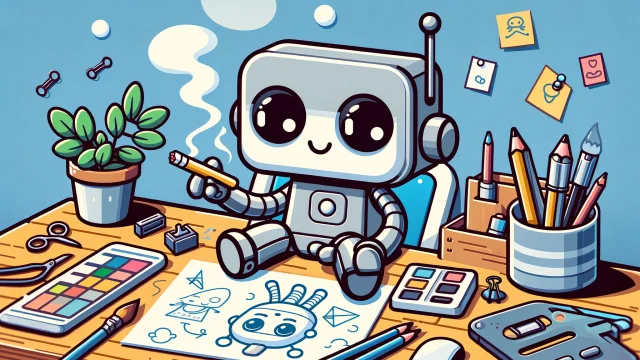Dragon Ball AF Manga: The Fan-Made Continuation That Took the Fandom by Storm
Dragon Ball AF (After Future or Alternate Future) is one of the most famous fan-made continuations of the Dragon Ball series. Among its various interpretations, the Dragon Ball AF manga stands out as an ambitious fan project that expanded the franchise’s lore with imaginative storylines, new characters, and epic transformations.
Although non-canonical, Dragon Ball AF manga has captivated fans worldwide, showcasing the enduring creativity and passion of the Dragon Ball community. This article explores the origins, key storylines, and impact of the Dragon Ball AF manga.
1. What is Dragon Ball AF Manga?
1.1. Origins
- The Dragon Ball AF manga is a fan-created series inspired by the original Dragon Ball and Dragon Ball GT.
- It originated from rumors and fan art that circulated in the early 2000s, particularly an image of Goku in a Super Saiyan 5 form.
- One of the most well-known adaptations of the manga was created by Toyotarou (formerly Toyble), who is now the official artist for Dragon Ball Super.
1.2. Purpose
- The manga serves as a continuation of Dragon Ball GT, imagining what happens after Goku’s departure with Shenron.
- It introduces new characters, powerful transformations, and story arcs that explore uncharted territories in the Dragon Ball universe.
2. Key Features of Dragon Ball AF Manga
2.1. New Transformations
- Super Saiyan 5: A highly anticipated form with flowing silver-white hair, immense power, and an ethereal aura.
- Demonic Transformations: Certain characters, like Vegeta, are corrupted by dark energy, adding a new dimension to their development.
- Fusion Evolutions: Enhanced versions of Gogeta and Vegito appear, featuring unique designs and unprecedented strength.
2.2. Original Characters
- Xicor: The son of Goku and a Kai, introduced as a major antagonist with god-like powers and a mysterious origin.
- Zarama: A cosmic entity tied to the Dragon Balls, adding lore to their creation and significance.
- Uub’s Evolution: Uub receives significant focus, fulfilling his potential as Goku’s apprentice and the reincarnation of Majin Buu.
2.3. Expanding the Universe
- The manga explores new realms and dimensions, including the underworld, other divine realms, and multiverses not previously seen in the canonical series.
3. Plot Overview
3.1. The Rise of Xicor
- The story begins with Xicor arriving on Earth, claiming to be the son of Goku and a Supreme Kai.
- Xicor’s immense power surpasses that of any previously encountered villain, forcing the Z Fighters to rally together.
3.2. The Return of Goku
- Goku returns to assist in battling Xicor, showcasing his new abilities gained during his time in the dragon realm.
- His transformation into Super Saiyan 5 becomes a pivotal moment in the story.
3.3. The Battle for Earth
- As Xicor’s plans to dominate the universe unfold, the Z Fighters must confront their weaknesses and unlock new powers to protect Earth.
4. Fan Reception and Impact
4.1. Popularity Among Fans
- The Dragon Ball AF manga quickly became a fan favorite, inspiring countless pieces of fan art, animations, and discussions.
- Toyotarou’s professional-quality artwork and compelling storytelling earned praise from the fandom.
4.2. Influence on Canon
- While Dragon Ball AF remains unofficial, elements such as new transformations and expanded lore may have influenced later Dragon Ball Super content.
4.3. Legacy
- The manga helped establish a thriving community of fan creators, inspiring similar projects and demonstrating the fandom’s love for Dragon Ball.
5. Where to Read Dragon Ball AF Manga
5.1. Online Platforms
- Fan sites and forums often host translated versions of the Dragon Ball AF manga for readers worldwide.
- Popular platforms like DeviantArt and Reddit feature user-created chapters and artwork.
5.2. Fan Communities
- Joining Dragon Ball fan communities on platforms like Discord can provide access to discussions and shared content related to Dragon Ball AF.
6. Comparison with Canonical Dragon Ball Content
6.1. Differences
- Dragon Ball AF is purely fan-made, with no official involvement from Akira Toriyama or Toei Animation.
- Its storylines and transformations are more exaggerated and fantastical than those in the canonical series.
6.2. Similarities
- The manga captures the essence of Dragon Ball with high-stakes battles, creative transformations, and the enduring themes of growth and perseverance.
7. Criticisms and Challenges
7.1. Overpowered Characters
- Some fans feel the transformations and power scaling in Dragon Ball AF are too extreme, making earlier series feats seem insignificant.
7.2. Non-Canon Status
- Being unofficial, the manga lacks the backing of Toriyama’s narrative oversight, leading to inconsistencies with established lore.
Conclusion: The Enduring Appeal of Dragon Ball AF Manga
The Dragon Ball AF manga stands as a testament to the creativity and passion of the Dragon Ball fandom. Though it remains unofficial, its bold storytelling and imaginative concepts have left a lasting impression on fans worldwide. Whether it’s the allure of Super Saiyan 5 or the introduction of intriguing characters like Xicor, the manga offers a thrilling look at what could exist beyond the official storylines.
For fans of Dragon Ball, exploring Dragon Ball AF is more than just reading a fan-made continuation—it’s a celebration of the franchise’s limitless potential and the dedication of the community that loves it.

